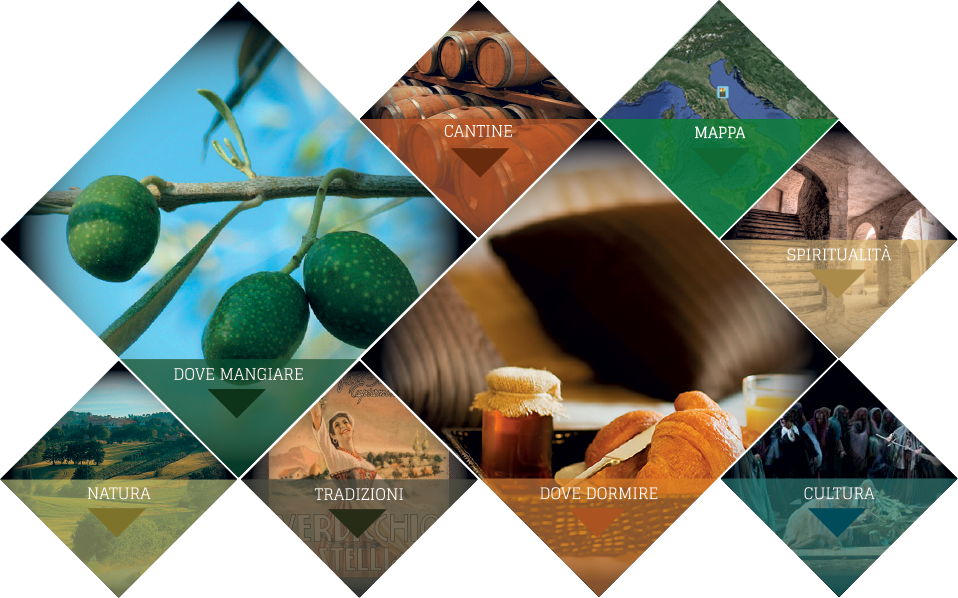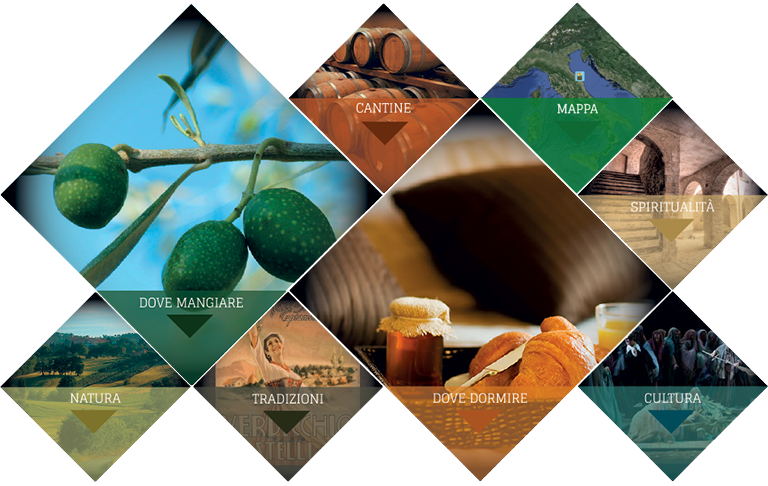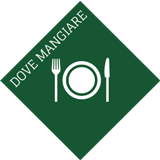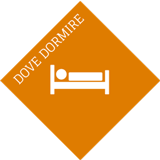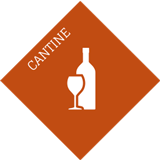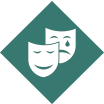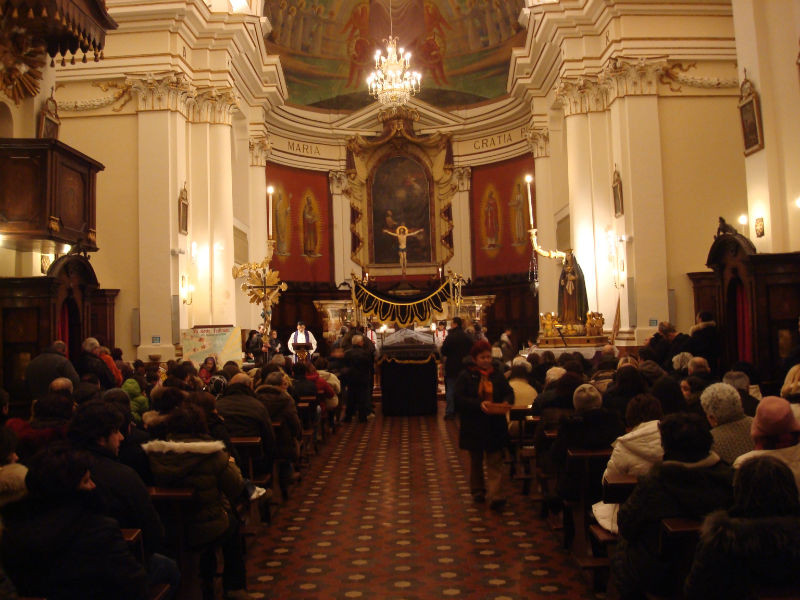
Situata nella parte alta del paese, venne ricostruita a partire dal 1779 su progetto dell’architetto domenicano Pietro Belli, che ideò la chiesa di San Domenico di Ancona. La chiesa, a croce latina, fu realizzata in un sobrio ma elegante stile neoclassico con alcuni elementi barocchi al suo interno, come le due belle cappelle ai lati del transetto.
Al suo interno, la parte più spettacolare è quella presbiteriale, dove si ammira un maestoso altare maggiore, che fu realizzato da Michele Rusconi da Lugano e, sopra il coro in noce, la tela dell’Annunciazione della Vergine (XVII secolo). Sul fondo, nel catino dell’abside, bell’affresco realizzato intorno al 1950 dalla Scuola Beato Angelico di Milano, raffigurante il Cristo Pantocrator, a cui spetta anche la realizzazione della cripta, ricca di busti, statue e reliquiari.
Tra le tante opere d’arte conservate nella collegiata e nei locali attigui vanno segnalate inoltre una Istituzione dell’Eucarestia, tela di Giambattista della Rocca Contrada (1606), alcune copie di ottima mano di opere del Ribera, detto lo “Spagnoletto”, un Cristo deriso, buona copia di scuola dei Carracci, il Volto di Cristo, opera di scuola
napoletana (sec. XVII). Notevole anche un gruppo scultoreo ligneo raffigurante Cristo risorto, datato 1781, e due quadri del pittore Ercole Ramazzani, allievo di Lorenzo Lotto.
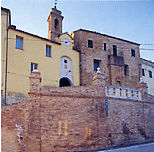
Reperti archeologici testimoniano la presenza dell'uomo nel territorio di Poggio San Marcello sin da tempi antichissimi. Negli anni '50, durante la sua permanenza a Poggio San Marcello, Padre Luigi Agostino Grazzi, missionario Saveriano e profondo conoscitore di storia, fece importanti ritrovamenti archeologici come una autentica tomba di guerriero piceno e notevoli reperti (armature, fibule, lame di pugnale, vasellame) che testimoniano la presenza - in questo territorio - di insediamenti umani fin dal 500 a.c.; esistono, inoltre, le prove del perdurare della vita durante l'impero romano ed anche nei primi tre secoli del cristianesimo, come testimoniano alcune tessere paleocristiane rinvenute casualmente nel 1956 durante i lavori di ristrutturazione della rete fognaria all'interno della cinta muraria del castello. Le origini del Castello si devono far risalire al XIII secolo.
Le cronache riferiscono che doveva essere di quel periodo una "villa" sopra il colle, dove esercitava la sua giurisdizione feudale il vescovo di Jesi.Le testimonianze degli insediamenti monacali del 1200-1300 sono tuttora visibili dalla piccola chiesa di San Marcello al Poggio di stile romanico-benedettino nel cui interno è stato rilevato l'affresco di una crocifissione di sicura e provata scuola fabrianese risalente al 1400 (ora restaurato ed esposto nella chiesa parrocchiale) ; la chiesa di Santa Maria del Monte (a qualche chilometro dal centro abitato, lungo la via Gioncare) di cui, dall' archivio vescovile, si ha notizia fin dal 1200 e la Cripta Gotica risalente anch'essa al 1300. Nel 1261 il Castello di Poggio San Marcello è citato come una realtà urbana già consolidata e fortificata. Entra nell'orbita del comune di Jesi dal 1301. La sua soggezione alla potente città della valle è documentata da un importante documento del 1530.
Si tratta della più antica pergamena che attesta la presentazione del tradizionale palio da parte del Castello alla città dominante, in occasione della festa di San Floriano, protettore di Jesi. Nei secoli centrali dell'età moderna, Poggio San Marcello segue le sorti di Jesi, di cui riconosce il dominio diretto anche se la città concede una certa autonomia alle varie comunità del suo Contado, che si concretizza in vere e proprie magistrature cittadine. Di queste, anche a Poggio San Marcello vi è testimonianza nei locali archivi storici.Il Comune viene annoverato nell'ambito dello Stato jesino fino alla caduta dell'"Ancien Regime" nelle Marche, conseguente all'invasione napoleonica di gran parte dei territori che costituivano lo Stato pontificio. Intensissima fu la vita durante i secoli 1600 e 1700, ce lo testimoniano le belle costruzioni all'interno delle mura castellane: il Palazzo Comunale edificato nel 1772 su progetto di Andrea Vici di Rocca Contrada (ora Arcevia) di recente restauro, presenta un soffitto affrescato con belle decorazioni.Nel 1926 viene decisa la sua soppressione come Comune e l'aggregazione a Castelplanio, in qualità di frazione. Questo stato di cose si è mantenuto fino al 1947, quando Poggio San Marcello è stato ricostituito Comune autonomo.

ll parco si trova nella vallata tra Poggio San Marcello e Montecarotto ed è di una bellezza rara, un gioiello della nostra Provincia. Una volta addentrati si nota come il Fossato con il suo affluente, quando confluiscono, vanno a costituire una “Y”. L'andamento del percorso e la parte prevalente del parco si qualificano come un tipico paradiso: leggeri declivi intercalati da altri più accentuati ma raccordati da percorsi pedonali. Tale contesto si arricchisce poi del complesso diroccato dell'antico mulino dell'olio ed a seguire le suggestive cascatelle, una naturale e l'altra artificiale realizzata, a suo tempo, per la canalizazione dell'acqua verso il mulino. Le passerelle di attraversamento del fossato, nonché il suggestivo bosco a macchia, ricco di essenze arboree di diversa natura e le diffuse “ liane” infondono un senso di avventura e di forte novità. Ricordiamo che il CIS è stato cofinanziatore, del progetto di recupero del parco del Trabocco, insieme con la Provincia di Ancona. I lavori erano iniziati nel settembre 2004 ma a seguito di eccezionali fenomeni atmosferici avvenuti nel periodo gennaio-febbraio-marzo 2005, quali nevicate e forti piogge torrenziali, erano stati sospesi. A seguito di quell'evento fu predisposta idonea variante ai lavori per rimediare ai fenomeni di dissesto idrogeologico verificatesi. Tali lavori sono stati portati a termine ad agosto 2006.
Il Comune di Montecarotto ha in progetto la sistemazione della strada comunale per un più confortevole accesso all’area del parco trabocco. In questo modo gli accessi saranno due, da Montecarotto il collegamento sarà garantito attraverso una strada vicinale, derivata dalla S.P. 11 e in prossimità di uno snodo si ha l’arrivo carrabile con il previsto parcheggio di sei auto. Da Poggio San Marcello, Il collegamento sarà garantito da una strada vicinale pedonale verso il campo sportivo. Il percorso ciclabile, a partire dall’accesso di Montecarotto, si snoda a valle lungo la riva sinistra del Torrente Fossato per circa 500 metri, con a ridosso il forte declivio della campagna; la larghezza di tale percorso è variabile e oscilla intorno ai 2,5 metri; il declivio è di circa 12 metri. Arrivati nel cuore del parco si ha la vista del vecchio mulino dell’olio in stato di abbandono per cui necessita una recinzione di protezione e di un piccolo restauro. Tale parte del parco è a forma pressocche ellittica. Tre percorsi pedonali si dipartono in prossimità del mulino con confluire poi sull’estremità dell’ellisse. Il parco verrà recuperato ed arricchito di nuove selezionate arborature ed opere di ingegneria naturalistica quale passerelle in legno sul torrente, il recupero strutturale dei muri di sostegno a secco in pietrame e delle relative cascatelle, palificate in legname con talee, scarpate con cordonata “viva”, palizzate e briglie. Le opere di ingegneria naturalistica insieme alla fitta alberatura, le liane, i tortuosi percorsi, il ruscellamento di alcune vene e tracce di animali selvatici contribuiranno a rendere il parco sicuro “polo di attrazione” per le comunità della Vallesina, e non solo.





